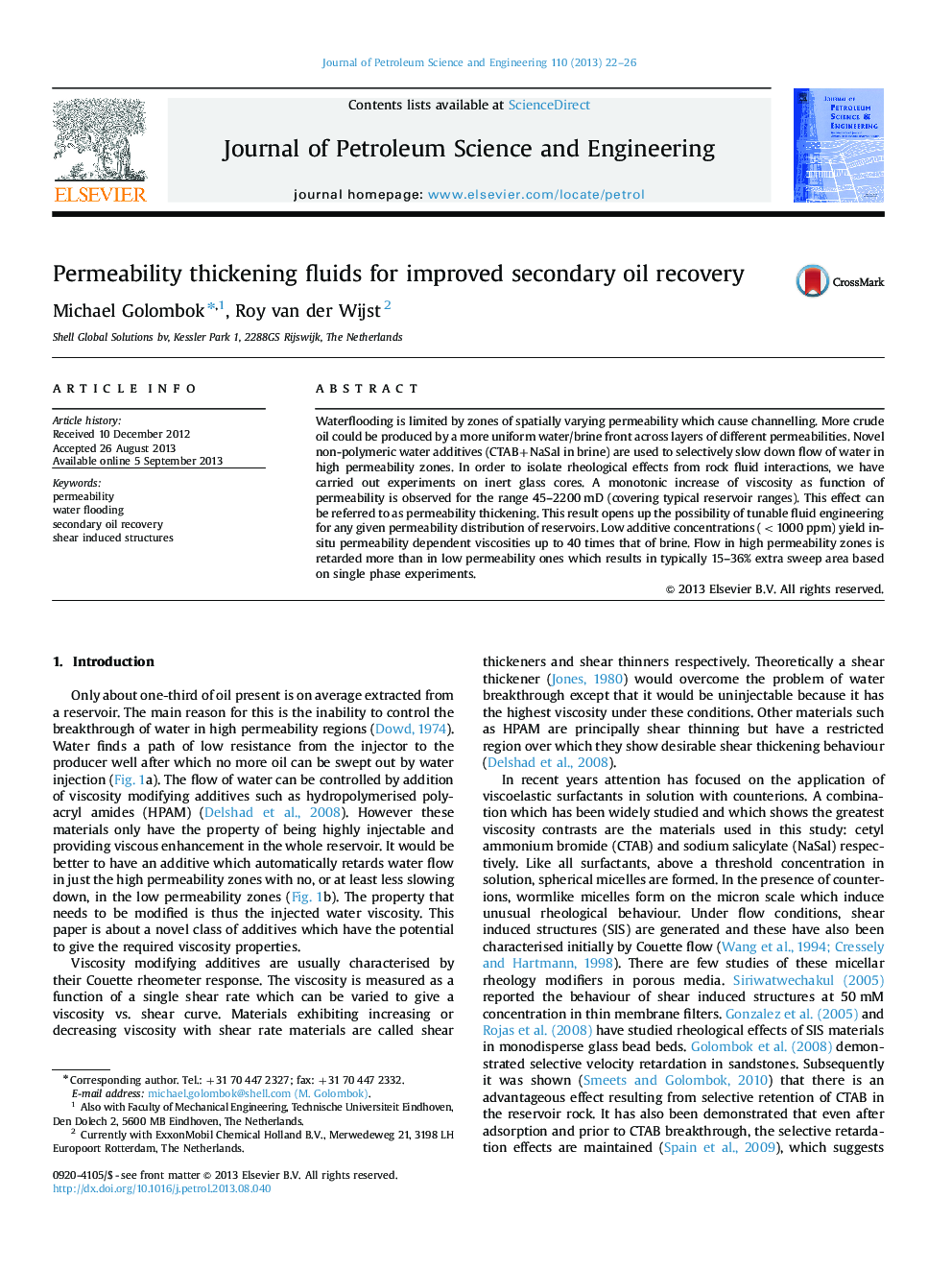| Article ID | Journal | Published Year | Pages | File Type |
|---|---|---|---|---|
| 1755187 | Journal of Petroleum Science and Engineering | 2013 | 5 Pages |
•Permeability thickening in the Darcy flow is observed analogous to shear thickening in a Couette cell.•Viscosity at high permeabilities is around 10 times that at low permeabilities.•Absolute increase of more than a third in sweeping of low permeability regions.
Waterflooding is limited by zones of spatially varying permeability which cause channelling. More crude oil could be produced by a more uniform water/brine front across layers of different permeabilities. Novel non-polymeric water additives (CTAB+NaSal in brine) are used to selectively slow down flow of water in high permeability zones. In order to isolate rheological effects from rock fluid interactions, we have carried out experiments on inert glass cores. A monotonic increase of viscosity as function of permeability is observed for the range 45–2200 mD (covering typical reservoir ranges). This effect can be referred to as permeability thickening. This result opens up the possibility of tunable fluid engineering for any given permeability distribution of reservoirs. Low additive concentrations (<1000 ppm) yield in-situ permeability dependent viscosities up to 40 times that of brine. Flow in high permeability zones is retarded more than in low permeability ones which results in typically 15–36% extra sweep area based on single phase experiments.
